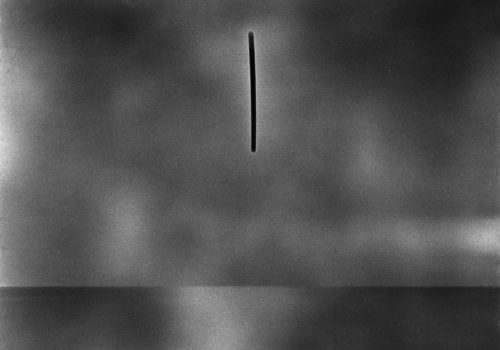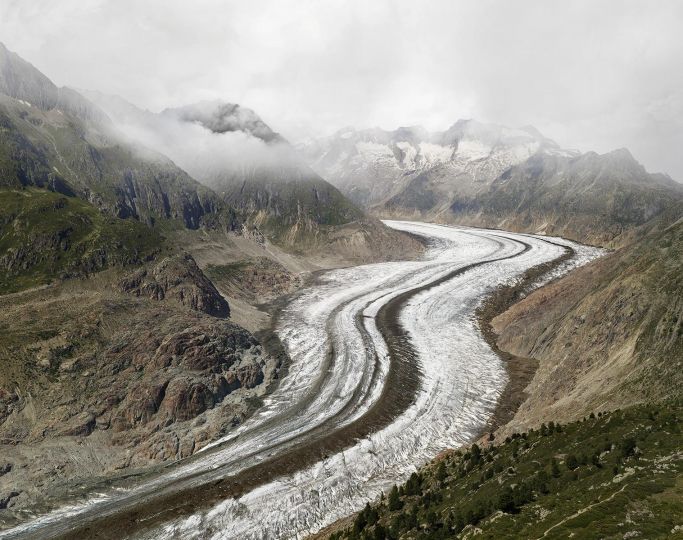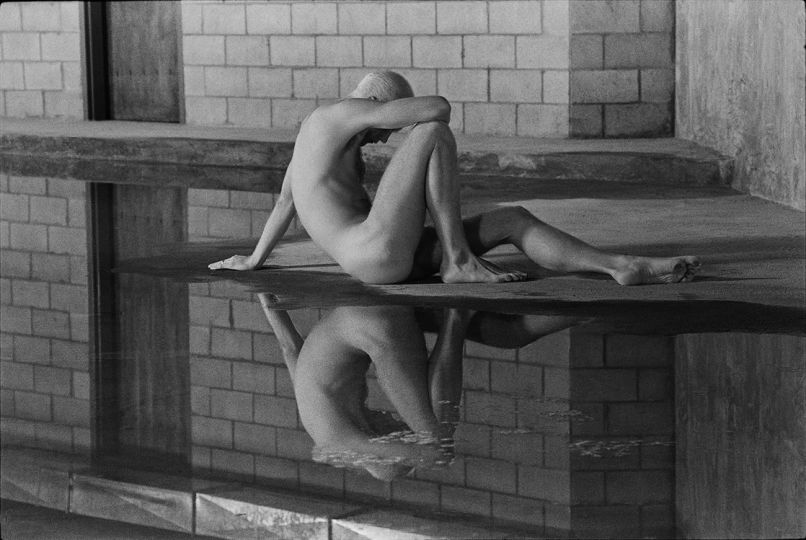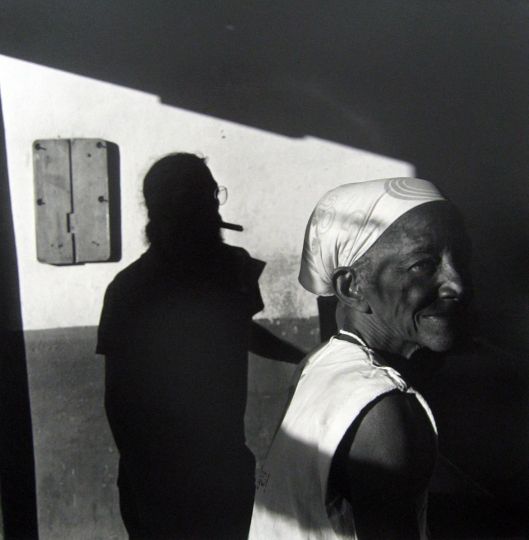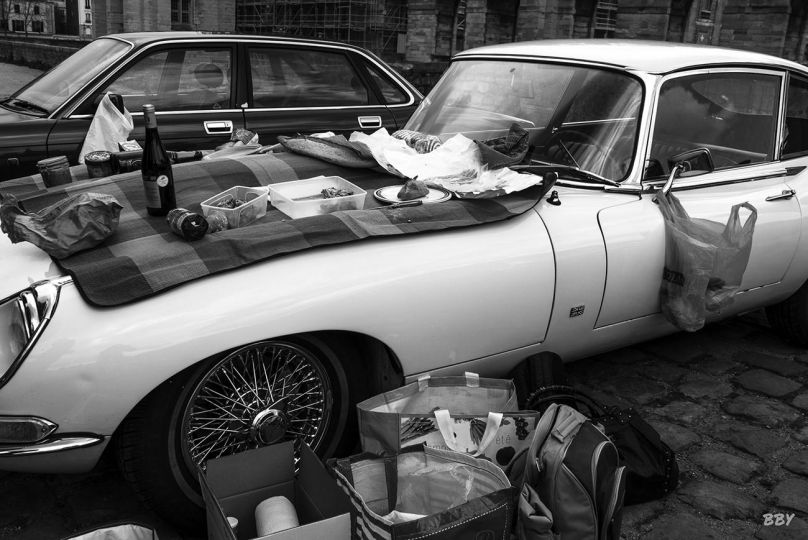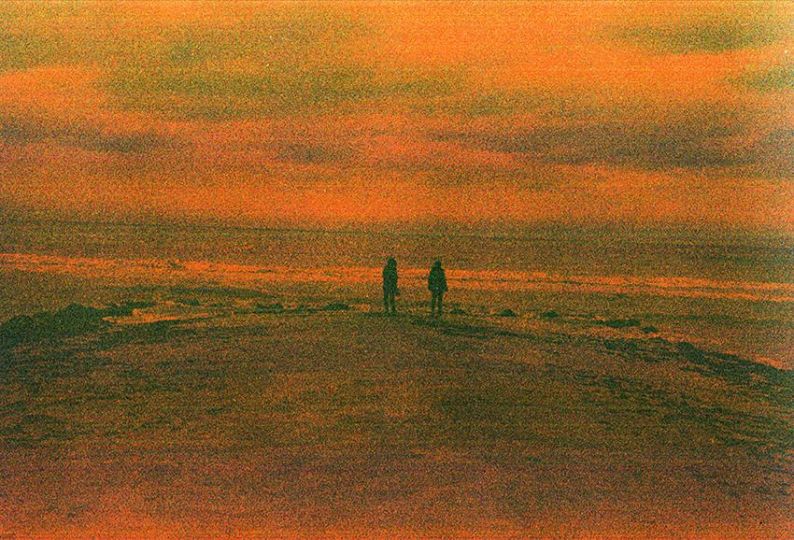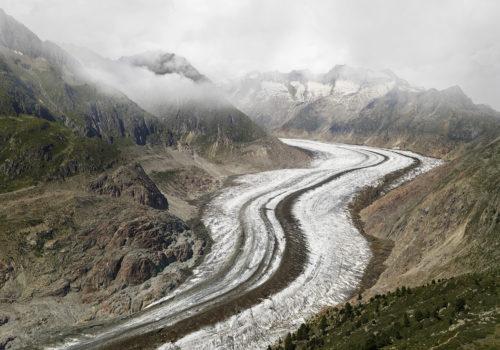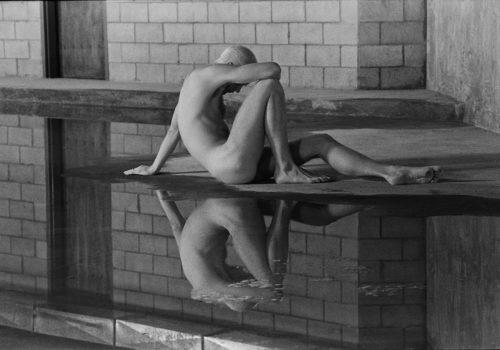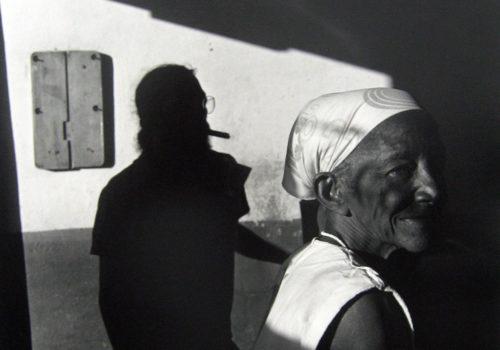Between 2003 and 2010 Schink sought out various locations on both the northern and southern hemispheres and recorded the sun’s course for exactly one hour. Each site created a different characteristic image in which the sun’s path appears as a dark diagonal line. The naked eye is unable to perceive the sun’s movement or the rotation of the earth; only the camera’s eye, open for a specific length of time, can affix the trace of light on the analog black- and- white film.
In the series ‘1 h‘ Schink develops the representation of the landscape in experimental and nonetheless genuinely photographic ways. In precise experimental procedures simply titled according to the latitude and longitude, length of exposure, and date, the trace of light inscribes itself onto the image.
Schink alludes to American photographer Minor White’s photograph ‘Black Sun‘ from 1955, in which solarization was coincidentally produced, as well as the historical works of Hermann Krone, who captured the characteristic black bar of the sun’s path as early as 1888. Schink’s images recall the standards of objective, scientific documentation, travel photography, and the attempt to visually represent the invisible.
The positive reception of these aspects has led the artist into contemporary discussions of ‘Measuring the World‘ – after Daniel Kehlmann’s novel – in both the arts and in science. The works also take up the question of time, which seems simultaneously stopped and yet elapsing due to the long exposure. Schink also tackled the topic of the landscape as a space-time continuum in his earlier works, objectively documented, large-format color photographs. Hatje Cantz published a comprehensive book of the ‘1 h‘ series in 2010.
Until April 16
Kicken Berlin
Linienstrasse 161A D
10115 Berlin

